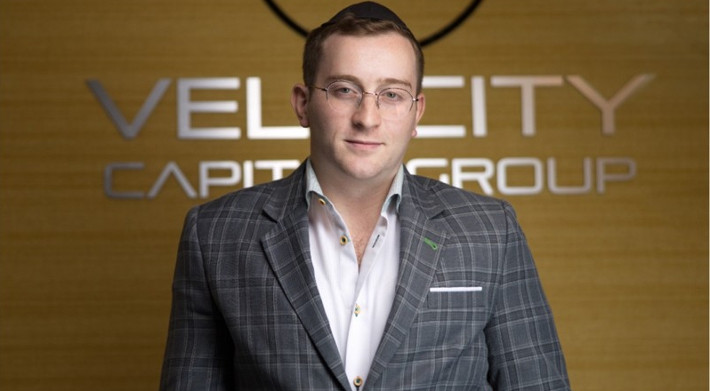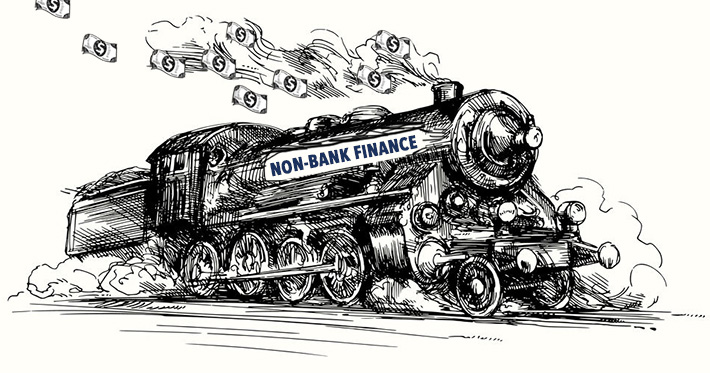MCA “Funder” Was a $100M Ponzi Scheme, SEC Alleges
August 18, 2021 It was all a ponzi scheme, the SEC alleged about MJ Capital Funding, LLC in a recently unsealed complaint. A purported MCA funding company in South Florida run by a woman named Johanna M. Garcia, is said to have raised between $70M and $129M from over 2,150 investors in roughly one years time.
It was all a ponzi scheme, the SEC alleged about MJ Capital Funding, LLC in a recently unsealed complaint. A purported MCA funding company in South Florida run by a woman named Johanna M. Garcia, is said to have raised between $70M and $129M from over 2,150 investors in roughly one years time.
According to the SEC, MJ Capital promised annual returns of 120% to 180% to syndicate in merchant cash advances and guaranteed the return of principal if the merchants defaulted.
Literally thousands of investors lined up to give their money, despite a similar scheme having just ripped through the community.
MJ Capital only funded between $588,561 and $2.9M worth of deals with the money, the SEC claims, while $27.4M was paid out to various entities including to sales agents for promoting the investment opportunity.
When someone tried to blow the whistle, MJ Capital responded by suing the whistleblower, “a cover-up effort” the SEC said was actually successful.
That is until an undercover FBI agent went to the company’s office in June and pretended to be an investor. The FBI successfully invested $10,000 into purported deals, and MJ Capital unknowingly made payments to the FBI as promised.
“Once the supply of new investors was exhausted, the MJ Companies would be unable to pay the promised returns to existing investors,” the SEC says.
Two companies are charged: MJ Capital Funding, LLC and MJ Taxes and More, Inc. in addition to Johanna M. Garcia personally. The SEC has already obtained emergency relief by securing a temporary restraining order and an asset freeze.
What The “Capital Dude” Said About Experience, Success, and the Future
August 18, 2021 Coming in at rank #1,044 on the 2021 Inc 5000 list was a small business finance provider with a whimsical name, Capital Dude. Having some common ownership overlap with another Inc ranked company, Central Diligence Group (#2,893), the Dude told deBanked that they didn’t shut down or pause funding throughout 2020. In fact, they continued to grow.
Coming in at rank #1,044 on the 2021 Inc 5000 list was a small business finance provider with a whimsical name, Capital Dude. Having some common ownership overlap with another Inc ranked company, Central Diligence Group (#2,893), the Dude told deBanked that they didn’t shut down or pause funding throughout 2020. In fact, they continued to grow.
“We really have to attribute the company’s growth to our hardworking and efficient team that made sure we didn’t miss a beat while having to work remote,” said company partner Andrew Hernandez.
The name, Capital Dude, was chosen to convey an easy process to their partners and clients, the company says, while at the same time being compatible with a mascot they had in mind. The Capital Dude himself is a superhero in a green suit with the letters “CD” emblazoned on his chest. He’s also got a red cape and a flashy smile.
Behind the optics, however, is a seasoned team.
“We got started in the industry during the ’08 – ’09 recession,” Hernandez said, “so when you experience getting started during a downturn, you quickly realize that the only way to keep going is to stick to your principles while continuously taking inventory of the ongoing situation and making any necessary changes quickly in order to protect the portfolio. While both downturns were very different in how they played out, applying that previous experience to the past 18 months has been interesting as we have seen a lot of similarities that are very measurable.”
Central Diligence Group, meanwhile, has gotten repeat recognition on the Inc 5000 list.
“CDG offers consulting and underwriting services to other alternative financing companies in the industry,” Hernandez explained. The “short term plan is to scale out this portion of the business in 2022 via licensing of our platform to funders, funds, accredited investors, etc.”
The companies are currently in the process of moving to a new office and they expressed that they are “very bullish on the future” and plan to increase their headcount and continue to grow.
Shopify Capital Originated $363M in MCAs and Business Loans in Q2
August 4, 2021 Shopify Capital originated $363M between merchant cash advance and business loans in Q2, bringing the first half total to $671.6M.
Shopify Capital originated $363M between merchant cash advance and business loans in Q2, bringing the first half total to $671.6M.
“Not only does Shopify Capital help fuel our merchants’ growth,” said Shopify President Harley Finkelstein in the quarterly earnings call, “our data tells us that merchants that accept Capital stay with Shopify longer as they succeed on the platform and take more of Shopify’s other solutions, namely Shopify shipping, apps, themes and domains and maybe most importantly, extending capital when their business needs it, reinforces the trusted relationship that we have with our merchants, one that goes beyond what they have with their bank or any other vendor. When we talk about Shopify’s flywheel, this is exactly what we mean.”
Shopify Capital is in the same league as rivals Square and Enova in terms of small business financing volume. Square Loans originated $1B for the first half, for example, while Enova has originated $722M.
Merchant Cash Advance Contract Terms Explained
August 3, 2021A Merchant Cash Advances is a sale of future receivables, not a loan. To learn the difference, watch this.
Below are three terms that are important to understand:
Velocity Capital Group Becomes First Funder to Offer Broker Commissions Via Crypto
August 2, 2021 Velocity Capital Group is bullish on crypto as a means of payment. Company President and CEO Jay Avigdor told deBanked that the company is officially incorporating cryptocurrency in two ways:
Velocity Capital Group is bullish on crypto as a means of payment. Company President and CEO Jay Avigdor told deBanked that the company is officially incorporating cryptocurrency in two ways:
(1) Brokers can now choose to get paid commissions in cryptocurrency instead of cash.
(2) Merchants can now choose to get funded via cryptocurrency instead of cash.
In both cases, Avigdor touted the speed in which cryptocurrency can change hands versus waiting around for an ACH or a wire.
“Our goal since day 1 of VCG, was to give ISOs and merchants the ability to access capital as fast as possible,” Avigdor said. “With VCG’s proprietary technology, we have been able to change that mindset from ‘as fast as possible’ to ‘the FASTEST possible.'”
The company says it will use stable coins (USD Coin and DAI) to conduct these transactions “in order to limit market volatility” but that depending on the merchant or ISO relationship, they would be open to transmitting Bitcoin, Ethereum, etc.
Merchants getting funded with crypto would still have their future receivables collected via ACH so that part of the arrangement would not change. The underlying business is the same.
VCG alluded to there also being potential tax benefits of taking payment in crypto.
Avigdor believes that among industry peers, VCG is the first to offer commissions in crypto. He further explained that this is only one piece of the puzzle and that there are plans to integrate the company’s technology in a way that will allow merchants to access funding in less than 20 minutes from the time of submission to funds actually being received.
Merchant Cash Advance and Small Business Lending for Beginners
July 30, 2021New to the small business finance industry? deBanked has more than 50 FREE explainer videos on terms and topics that merchant cash advance and small business lending professionals must know to succeed. This library will continue to grow over time and remain completely free!
The Biggest Expansion Period of Our Lifetime? The Non-Bank Finance Industry Says Full Steam Ahead
July 8, 2021 Erez Stamler, Managing Director of Fresh Funding, said that the events of the past year has been an up and down ride, from the initial shutdown shock to rushes in demand. Now that the world is back, those that survived are here to stay and need capital to grow.
Erez Stamler, Managing Director of Fresh Funding, said that the events of the past year has been an up and down ride, from the initial shutdown shock to rushes in demand. Now that the world is back, those that survived are here to stay and need capital to grow.
“At first the system was in shock, then a phase where we saw a strong spike in submissions [where] the owners were probably looking for some sort of PPP-type solution, and that was not available by us,” Stamler said. “Going into 2022 we believe there’s a lot of demand out there. A lot of businesses have demonstrated growth during Covid and hopefully will continue that into 2022. As far as we can see right now, we’re going strong this year for sure.”
Alex Vasilakos, who tracks online interest in alt finance as the director of marketing for Finance Marketing Group, said there had been an increase in online searches for non-bank financing solutions in the past year because banks weren’t sure how the pandemic would pan out.
“We are back in the office, and we are seeing a large uptick in digital advertising since Covid, and it is continuing to increase,” Vasilakos said in an email. “I am seeing and predicting that people will be leveraging more online sources for financing than they have in the past.”
Amotz Segal, a startup co-founder of Edge Funder, said that if the Covid spikes and black swan events are over, there is no limit to demand, and the hybrid model is here to stay. Edge Funder uses lead generation and AI underwriting to make SMB deal-making easier, Segal said.
“I think nobody’s really bullish enough, I think we’re facing the beginning of the biggest expansion period of our lifetime,” Segal said. “Our team based in New York City will hopefully gradually go back to the office this fall. That being said, I don’t think that we will ever see a one-hundred percent office-space environment. I think what the pandemic did is accelerated a trend that already began of people working from home, working remotely, and not having to attend the office daily.”
Segal has grounds to be bullish: Edge was just acquired by Yes Lender after only a year of development.
 James Lee, CEO and co-founder of Julius Technologies, said that people had definitely gotten a feel for remote work, but virtual does not replace in-person communication. Julius is a startup that creates cost-effective back-end infrastructure for fintechs, building efficient data analytics for credit underwriting.
James Lee, CEO and co-founder of Julius Technologies, said that people had definitely gotten a feel for remote work, but virtual does not replace in-person communication. Julius is a startup that creates cost-effective back-end infrastructure for fintechs, building efficient data analytics for credit underwriting.
“We will see some shift. People got a taste of what it’s like to work from home; the hybrid model is a possibility in the short term,” Lee said. “In the long term we’ll see if Covid comes back in the fall with people working closely together. Hybrid works, but face-to-face time is irreplaceable and very difficult to replace in a virtual sense.”
Lee said that in-person interaction is vital for networking, mentorship, and even random, spur-of-the-moment conversations that bring a team together. Lee recently completed the Techstars incubator program fully virtually. Everything but launch day was virtual in a process that is usually hands-on.
Some firms are back in the office full time. Samuel Yakubov, director of ISO Relations at Maverick Funding, said he was already working in the office in June and had high hopes for 2022.
Tyler Deters, president and CEO of Paradigm Equipment Finance in Utah, said his business was back indoors and on track.
 “We are optimistic for the future,” Deters said. “Our staff has all returned to the office, and we are full steam ahead.”
“We are optimistic for the future,” Deters said. “Our staff has all returned to the office, and we are full steam ahead.”
Joe Lustberg from Upwise Capital couldn’t agree more and said his team had been working in the office through the shutdown. Lustberg is confident that the post-pandemic world will be great for business, and Upwise has been doing well servicing PPP, equipment and trucking financing, and niche cannabis industry funding. Upwise also took advantage of the dip in real estate to snag an office in Manhattan and “never looked back.”
“We made sure that everybody was vaccinated, and before the vaccination was available we were still in the office. We were getting tested monthly and my guys had the option to work from home,” Lustberg said. “To be honest, most of them want to be around the company culture, the show floor. It’s much easier for them to walk in my office and ask me a question than FaceTime. It’s good New York is coming back.”
Six or seven months ago, it might have been a market full of PPP loans, but MCA is coming back strong, Lustberg said. With government funds exhausted, he said even firms that had never taken an advance before are looking for funding.
Steven Hunter would agree the industry is back. As a consultant that works best coaching underwriting teams in person, however, the work from the home model has been a drag. He said hybrid may work for relaxed work environments, but to get ahead, in-person is the way it has always been and always will be.
“I think the fact that we have proven we can, in most situations, work remotely has made [funding shops] think: ‘well you know airfare, hotel, meals and Ubers.. you know it adds up.’ So, I think I think a lot of people are going to be cost-sensitive to travel in a way they weren’t before,” Hunter said. “But if you want to make it in this industry as a startup funder, and you want ISOs to give you deals, you cannot do that by the phone and you cannot do that via Zoom call. You have got to show respect for the good shops.”
Hunter said in the actual MCA business, you don’t win deals by calling them 100 times. You get deals from the best of the best by selling face to face.
“You get deals from [top brokers] by putting your ass on a plane and flying into LaGuardia, taking a cab to their office and camping out there for three days, and talking to them looking them in the eye and saying this is what I’m going to do for you,” Hunter said. “Sales is always going to be boots on the ground. You got to put people out there.”
On The Scene With KEO in Miami
July 8, 2021Farid Shidfar is Head of US Operations at KEO, a small business finance company based in Midtown Miami. I sat down with Shidfar to ask about KEO’s recent foray into the market, what they’re seeing on the front lines, and their plans for the future. Our one-on-one interview is below:






























